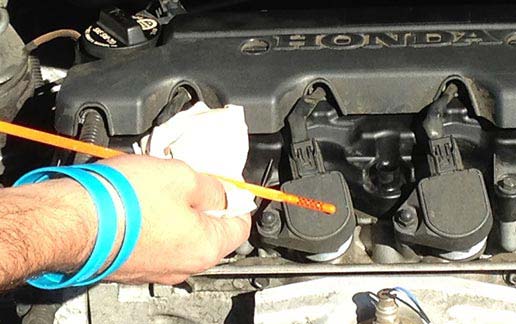
Checking your car’s oil can help keep it running smoothly.
Checking Your Oil the Easy Way
Oil is one of the most important elements to the overall health and well-being of your car, second only to gasoline. It’s the lubrication that allows your car’s engine to run smoothly. Depending on how you drive, where you drive, and what you drive, you have to get periodical oil changes. To the first-time driver, this may seem like an added expense you can do without, but neglecting your car’s routine oil changes will put an end to your driving faster than any license suspension ever could.
When to Check Your Oil
Depending on what car you drive, this figure can vary wildly. Most modern cars have digital displays or reminders that will indicate when it’s time to get an oil change, but even so, it’s good to know how to check, and what to look for. 20 years ago, getting your oil changed every 3,500 miles was considered standard, but modern cars can go 7,000 miles and more between oil changes.
Checking the oil is a good thing to add to your routine car maintenance every month, just to make sure there is enough oil, it’s not too dirty, and things are running smoothly.
How to Check Your Oil
- Make sure your car is cool, so that everything has settled. If you just drove, you may not get a true reading.
- Pop the hood and locate the dipstick (it usually has a round loop for a head).
- Pull it all the way out, and wipe off the end with a paper towel or rag.
- Slide it back in, all the way down.
- Now pull it out once more, and check the level against the markings on the stick.
What’s Good Oil? What’s Bad Oil?
If the level is too low, you’ll have to add oil. Figure out what weight is recommended by consulting your owner’s manual, and buy a quart. This doesn’t excuse you from your oil change, by the way.
You will also want to check the color of your oil. Clean oil is a honey-golden color, and dirty oil is brown or black. If you’re early for your routine oil change, but your oil is significantly dirty, you should probably be okay, but if it happens again and again, you may need to change your oil more frequently.
If your oil appears foamy, or milky, it may have become contaminated with coolant. This could indicate a number of potentially expensive problems, such as a blown head gasket. See your mechanic immediately.
If it’s time for an oil change, find a service center, or learn how to do it yourself with our oil change page. Checking your oil, like all routine maintenance, is a crucial part of safe driving, not to mention a simple way to prevent roadside breakdowns, and save yourself time, money, and headaches.










